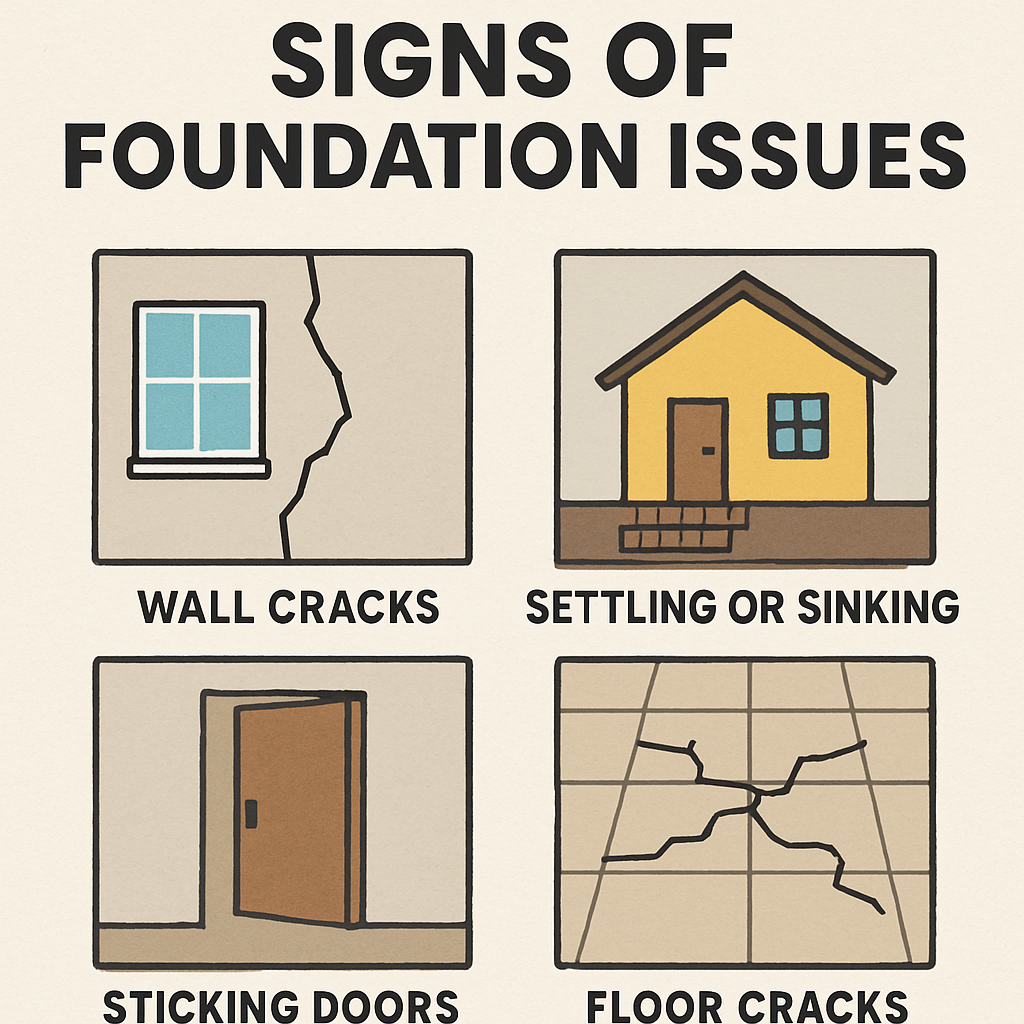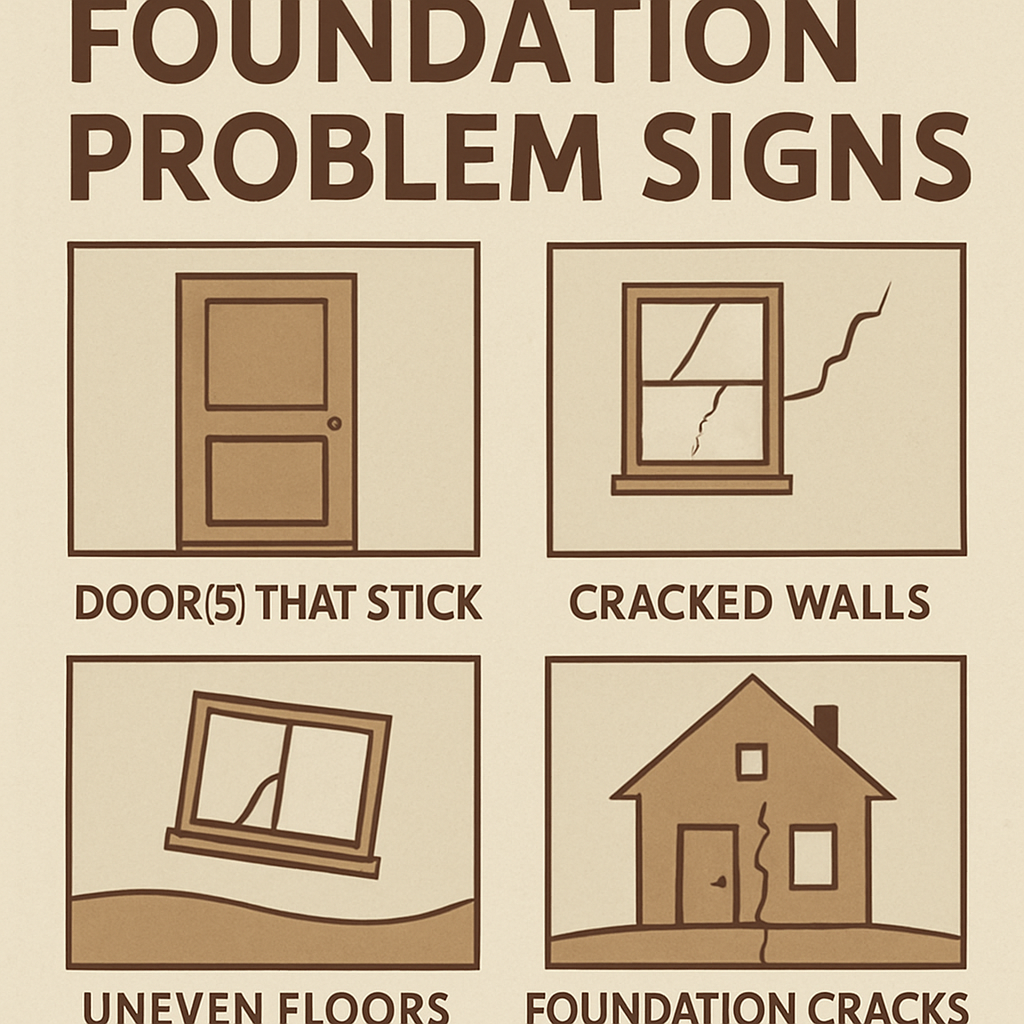House foundation repair is crucial for maintaining a safe and stable home. Foundation issues can lead to serious structural problems if not addressed promptly.
Cracks in walls, uneven floors, and doors that won’t close are common signs of trouble.
Understanding the causes of foundation damage is essential. Soil movement, water damage, and poor construction are frequent culprits.
Early detection and repair can prevent costly and extensive damage. Regular foundation inspections are vital for identifying issues early.
DIY repairs are possible for minor problems, but professional help is often necessary. Knowing when to call an expert can save time and money.
This guide will help you understand foundation repair methods and when to seek professional assistance. Protect your home by learning about foundation repair today.
Understanding House Foundation Issues
Foundation issues arise from various factors affecting a home’s stability. These problems can escalate if not addressed in time. Understanding the root of the problem is key to finding effective solutions.
Several signs indicate potential foundation issues. Cracks in walls, ceilings, and floors can signal trouble. Doors and windows that stick may also point to foundation shifts.
Early detection can prevent larger problems. Left unchecked, minor issues could develop into major structural concerns. Homeowners should be vigilant for early warning signs.
Common causes include soil changes, water damage, and inadequate drainage. Each can compromise the foundation’s integrity over time. Identifying these causes helps in selecting the right repair method.
The first step is a thorough inspection. This assessment will guide you in making informed decisions about repairs. A detailed foundation inspection can reveal unseen issues.
Key points to consider when understanding foundation issues:
- Visible cracks
- Sticking doors and windows
- Uneven floors
- Water pooling around the home
Common Signs of Foundation Problems
Identifying foundation problems early can save you time and money. Some signs are subtle, while others are more noticeable. Being aware of these indicators helps in preventing severe damage.
Cracks in walls are a clear sign of potential foundation issues. Both vertical and horizontal cracks can suggest underlying problems. The size and direction of the cracks often indicate severity.
Sloping floors may point to foundation movement. Uneven surfaces can result from shifting or settling. This can also lead to difficulties in opening and closing doors.
Gaps around window frames or door frames are another red flag. These gaps can widen over time if left unaddressed. They often accompany wall cracks and other structural issues.
Unexplained water leaks might indicate foundation trouble. Water pooling or dampness in a basement can signal damage. Ensure proper drainage around your home to mitigate this risk.
Look out for these signs to catch foundation problems early:
- Wall cracks
- Uneven floors
- Gaps in frames
- Water leakage
Causes of Foundation Damage
Foundation damage often stems from natural or construction-related factors. Understanding these causes can aid in prevention and maintenance. Different issues can lead to similar problems.
Soil movement is a primary cause of foundation damage. Expansive clay soils, common in many regions, can shift dramatically. This movement can stress and crack the foundation.
Water damage is another significant contributor. Poor drainage around the home can lead to water accumulation. Consistent moisture can soften the soil, causing the foundation to settle unevenly.
Construction errors may also lead to foundation issues. Poor initial design or inadequate materials weaken the structure. Over time, these flaws can become apparent, leading to substantial repairs.
Key causes of foundation damage include:
- Soil movement
- Water damage
- Construction errors

Types of House Foundations
House foundations come in various forms, each with unique attributes and maintenance needs. Choosing the right type of foundation can influence the longevity and stability of your home.
Slab-on-grade foundations are common in areas with mild climates. They are essentially a concrete slab poured at ground level, providing a simple and cost-effective option.
Crawl space foundations elevate homes slightly off the ground. This space allows for easier access to plumbing and wiring, but it requires proper ventilation to prevent moisture buildup.
Basement foundations offer both living space and stability. These are deeper and provide additional room for storage or finished basements, although they need consistent moisture control to prevent water damage.
Common types of house foundations include:
- Slab-on-grade
- Crawl space
- Basement

Foundation Inspection: How to Assess the Damage
Conducting a foundation inspection is vital to identify potential issues early. It helps in selecting appropriate repair solutions and averts further problems. Homeowners should familiarize themselves with the inspection process.
Start by visually examining the exterior of your home. Look for cracks in the foundation, walls, or around doors and windows. Pay attention to unevenness in the structure’s settling, which might indicate underlying issues.
Inside your home, inspect doors and windows. Difficulty in opening or closing them might suggest a foundation shift. Also, check for gaps in trim or doors that don’t latch properly, signs of potential problems.
Hiring a professional inspector can provide a thorough assessment. They use specialized tools and have the expertise to gauge the extent of any damage accurately.
Key aspects of foundation inspection include:
- Exterior and interior visual checks
- Monitoring structural shifts
- Engaging a professional inspector

Foundation Repair Methods Explained
Foundation repair methods vary based on the type of damage and the home’s construction. Each method addresses specific issues to restore stability and safety. Understanding these methods will help in choosing the right option for your home’s needs.
One popular method is slab jacking. This technique involves lifting the foundation by injecting a mix under it, correcting any sinking. It is effective and less disruptive than other methods.
Piering is another common solution. Steel piers are driven into the ground to support and stabilize the foundation. This method is often used when soil conditions cause foundation shifting.
Wall anchors can address bowing walls. They stabilize by attaching a plate inside the wall, anchoring it to the soil outside. This stops further inward movement.
Often, multiple methods are combined for comprehensive repair. For significant issues, contractors might use underpinning. This strengthens and stabilizes foundations, making it suitable for serious structural problems.
Selecting the right method requires proper assessment of damage and understanding soil conditions. Consulting with professional contractors ensures effective and long-lasting repairs.
Key foundation repair methods include:
- Slab jacking
- Piering
- Wall anchors
- Underpinning

Crack Repair Techniques
Cracks in foundations can indicate severe structural issues. Repair techniques vary based on the crack’s severity and location.
For minor cracks, epoxy injections are often used. They seal the crack and restore the wall’s integrity. This method is effective and quick.
For more significant cracks, carbon fiber strips provide reinforcement. They add strength without extensive structural changes.
Crack repair options include:
- Epoxy injections
- Carbon fiber strips

Wall Foundation Repair and Reinforcement
Wall foundation repairs focus on solving bowing or cracked walls. Stability and strength are the main goals of these repairs.
One method involves using steel beams to brace walls. Beams are installed vertically to reinforce the weakened structure.
Another technique is wall anchors. These are installed to pull the bowed wall back into position over time.
Common wall repair methods:
- Steel beam reinforcement
- Wall anchor installation

Floor and Basement Foundation Fixes
Basement and floor foundation issues often result from water damage or soil movement. Proper fixes restore both functionality and appearance.
Uneven floors may require leveling. This can be done by adjusting the foundation or adding support beams.
In basement foundations, addressing water problems is crucial. Sealing cracks and improving drainage can prevent further damage.
Basement and floor fixes include:
- Floor leveling
- Crack sealing
- Drainage improvement

DIY Foundation Repairs: What Homeowners Can Do
Minor foundation issues can sometimes be tackled by homeowners. However, it’s crucial to first identify the problem’s extent to ensure it’s suitable for DIY efforts.
Simple tasks like sealing minor cracks or improving drainage around the home can effectively prevent more serious issues. These activities are often manageable and don’t require specialized tools.
Improving water management is a key DIY activity. Redirecting downspouts and ensuring the ground slopes away from the house can protect the foundation from water damage.
For DIY enthusiasts, being aware of limitations is vital. Significant problems, such as major cracks or shifting foundations, are best left to professionals. Attempting complicated repairs without expertise can worsen the situation.
DIY foundation tasks might include:
- Sealing small cracks
- Enhancing drainage
- Redirecting water flow

When to Call a Professional for Foundation Repair
Knowing when to seek professional help is crucial for foundation repair. Recognizing the signs of severe damage can save your home from more serious issues.
If you notice significant cracks, uneven floors, or doors that refuse to close, these might indicate major structural problems. Such conditions often require expert evaluation and intervention.
Professionals possess the tools and expertise to handle complex repairs. They can assess the damage thoroughly and propose suitable solutions tailored to your home’s needs. Neglecting to address major foundation problems promptly can lead to costly repairs in the future.
Signs indicating you need professional help include:
- Large cracks
- Unstable walls
- Persistent door alignment issues

Foundation Repair Costs: What to Expect
Understanding the cost of foundation repair is essential for homeowners. Costs vary widely based on factors such as damage severity and repair methods.
Minor foundation repairs, like crack sealing, are relatively inexpensive. These usually range from a few hundred to a couple of thousand dollars.
For more extensive repairs, such as underpinning or pier installation, expect costs in the thousands. The home’s location and foundation type can also influence the total expense.
A typical cost breakdown might include:
- Crack sealing: $500-$2,000
- Piering: $1,000-$3,000 per pier
- Slab jacking: $500-$1,500
Investing in professional repair services can provide long-term savings. They often offer warranties, ensuring quality work and future security.

Preventing Future Foundation Issues
Preventing foundation problems is crucial for maintaining your home’s integrity. Proactive steps can save you money and stress over time.
Water management is key. Ensure gutters are clear and extend downspouts away from the foundation. This prevents water accumulation and soil erosion.
Routine inspections can also help catch issues early. Keep an eye on changes like wall cracks or sticking doors. Prompt action can avert larger repairs.
Consider these preventive measures:
- Install proper drainage systems
- Maintain consistent soil moisture
- Regularly inspect the foundation
Adopting these habits will protect your home. This will ensure a stable foundation for years to come.

Frequently Asked Questions About House Foundation Repair
Understanding foundation repair can be daunting. Many homeowners have questions about what to expect and how to proceed with repairs.
Here are some common questions:
- What are the first signs of foundation issues?
- Can all foundation problems be fixed?
- How much does foundation repair typically cost?
Addressing these questions helps homeowners make informed decisions. It’s important to consult with professionals for any doubts. Their expertise can guide you through the repair process smoothly. Always prioritize safety and reliability when dealing with your home’s foundation.
Conclusion: Protecting Your Home’s Foundation
A strong foundation is essential for a safe home. Addressing foundation issues promptly can save money and prevent further damage.
Regular inspections and maintenance are key. Understand the signs of foundation problems, and act quickly. Whether tackling DIY repairs or hiring professionals, ensure long-term stability for your home. Proper care today can prevent costly repairs tomorrow, safeguarding your investment and peace of mind. Prioritize your foundation to protect your home’s integrity for years to come.






